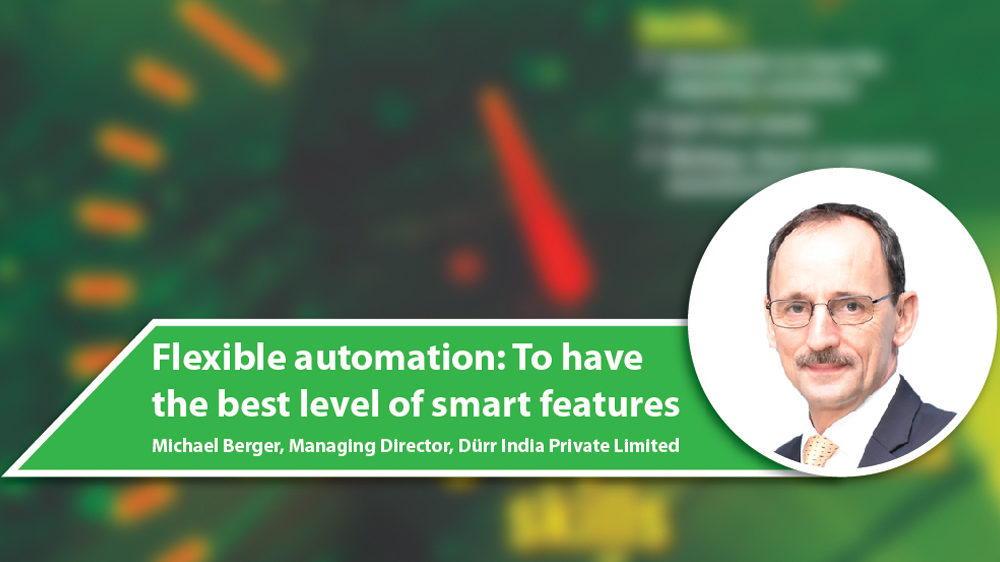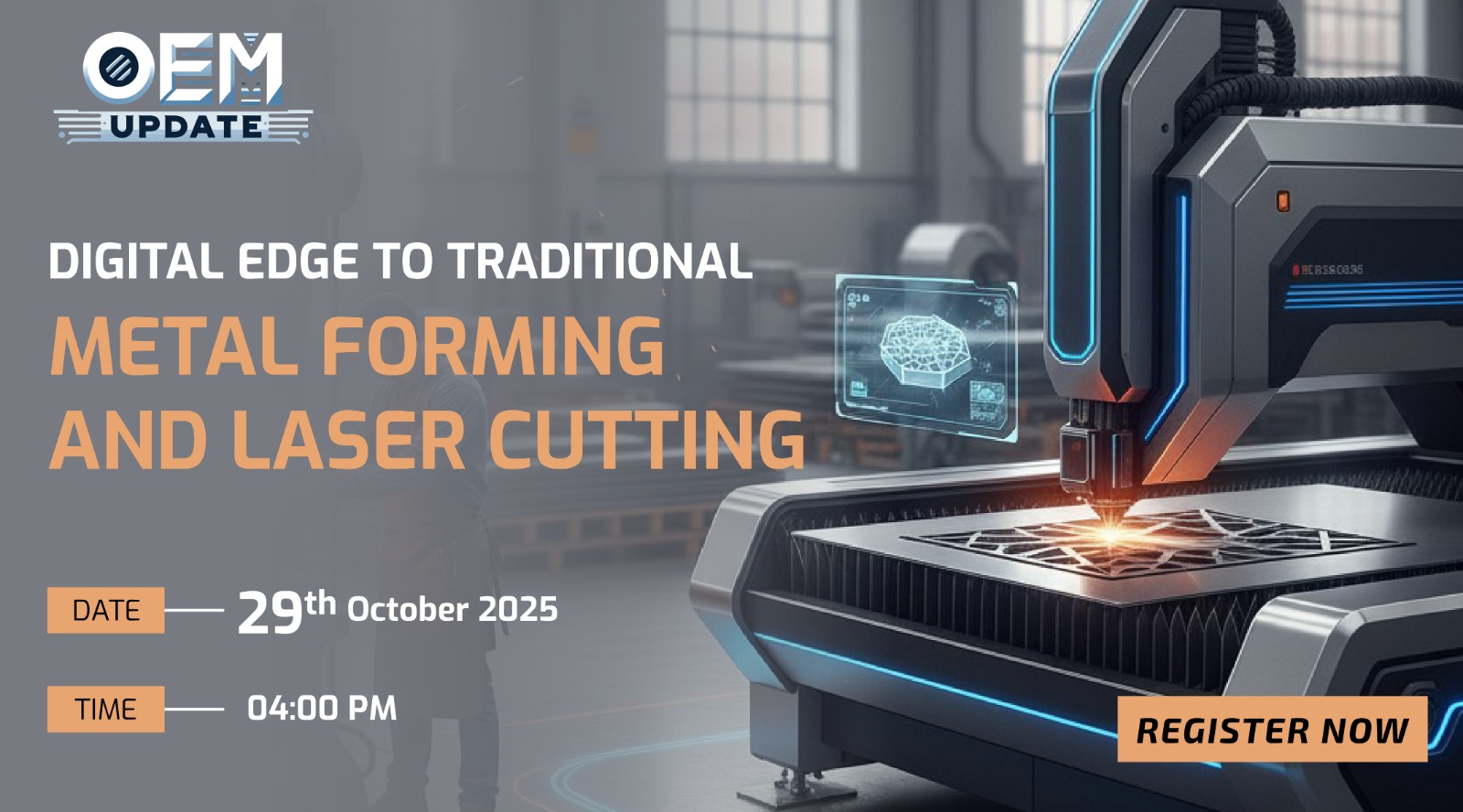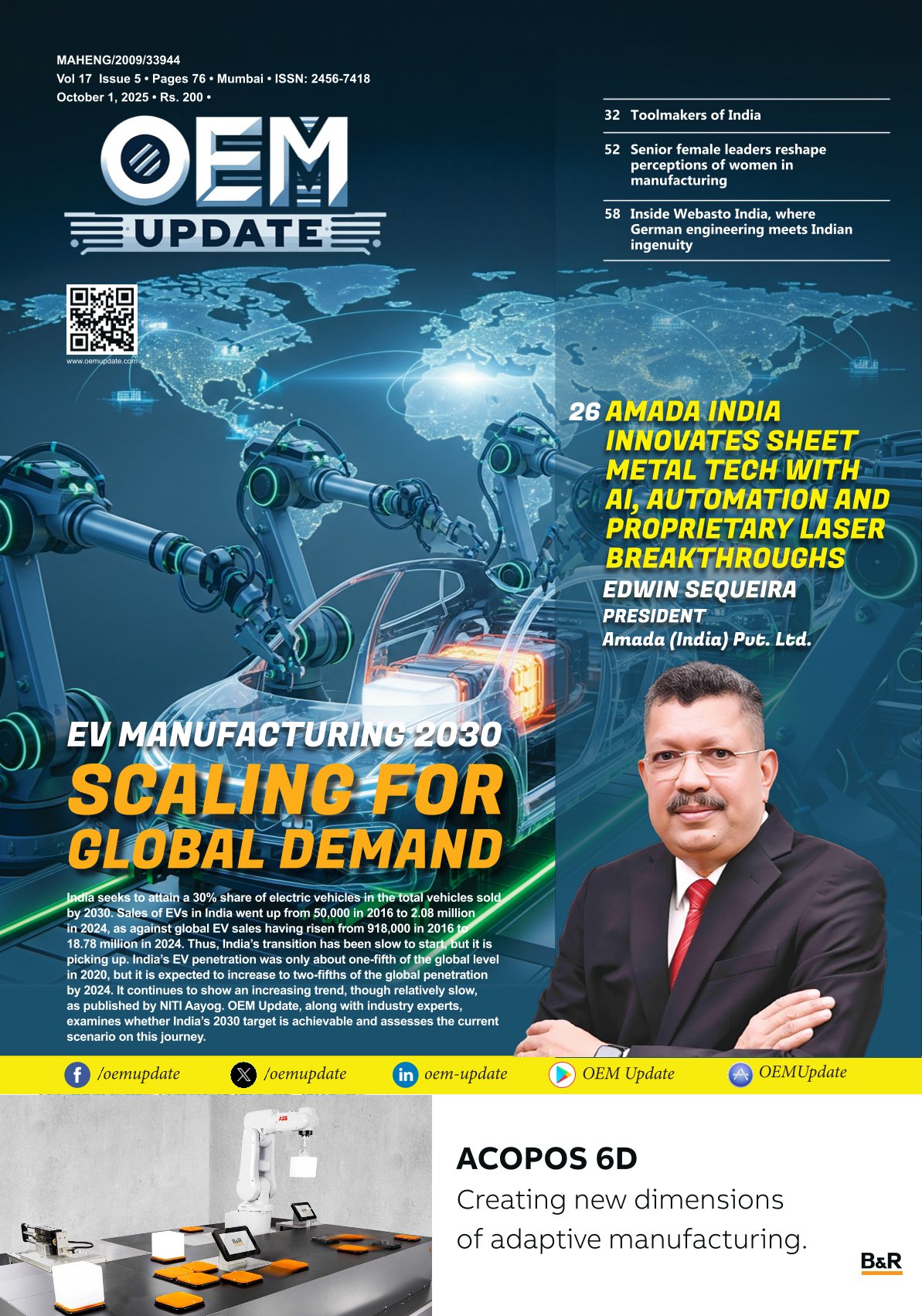Flexible automation: To have the best level of smart features
By OEM Update Editorial November 13, 2018 6:00 pm IST
“Close to 50 per cent of the installed automotive production capacity contains Dürr technology and products.”
Michael Berger, Managing Director, Dürr India Private Limited
Today, the key points of the automotive industry involve gathering data and putting everything under digitisation. Michael Berger, Managing Director, Alevoor Prashanth, Head – Application Technology of Dürr India Private Limited and Robin Kaufmann, Senior Sales Manager – Application Technology, Dürr Systems AG, Germany in an interaction with Athira Bejoy of OEM Update, discusses the deep embedded need for each industry to be a part of the revolutionary Industry 4.0; to know what is happening within the deepest section of the factory, to evolve and shift gears to a more efficiency and productivity from the kind of set up they have.
Tell us about Dürr’s journey in India for the last 50 years.
Michael: India has always been an interesting market with challenging opportunities. Our 50 years journey from building a galvanising line for Tata, Jamshedpur to till today we have developed numerous references in India. Today, almost all the five divisions of Durr are active and offer high-quality paint and final assembly systems, application technology, clean technology systems, measuring and process systems, woodworking machinery and systems. The firm has expanded its capacities on the sub-continent with a view not only to serve the local market but also to make itself available to customers outside India as an engineering centre. Dürr India headquartered in Chennai spreaded across all the major automotive hubs to serve our customers across the country. Few of our turnkey customers include automotive giants like VW, Mahindra, Tata, Ford, Hyundai many more. The belief in us is because the industry sees the German technology as a standard and Dürr is upright here to do it so which is already proven.
How do you reckon Dürr’s contribution to the automotive and automation industry?
Michael: I think we have contributed immensely and have put in a lot of efforts to bring up German technologies to the Indian market; with western, Indian and Japanese OEMS we have reached and build up. Close to 50 per cent of the installed automotive production capacity contains Dürr technology and products. Trend is ‘automation flexible, highly efficient and sustainable production systems’ and we are continuously demonstrating the same in our executions and projects. Our ‘digital@Dürr’ strategy helps us to bring our customers to have the best level of smart features in their production systems.
What can you tell us about your latest products and services? How do you cater your end-user’s requirements? How receptive do you think the Indian market is?
Prashanth: The ready2spray robot is the most recent launch of ours. This brings up a new dimension because mostly any paint shop requires a lot of engineering and coordination to be done which takes up time; ready2spray cuts down all these and makes things more simple for the integrator to give a very quick solution because time is money and so the product realisation is much faster. This is our latest product and we are continuously evaluating its progress, much more research and giving out its result to the industry. The industries are on the lookout for partial/complete automation and Dürr is well positioned to meet the challenges.
Prashanth: Today, the key points of the automotive industry are gathering data and digitisation. There is a need for the industries to be a part of Industry 4.0 to know what is happening within their factory and how to maximise the output, increase its efficiency and productivity from the kind of set up they have. Though they are in the right direction, implementing data analysis and the decision making is much more important. An industry moving in this direction, collecting all the information and making big decisions, will impact the business in terms of investment, ROI and everything. This is a major thrust for industries to link Industry 4.0 and to enhance the performance of the complete organisation. Dürr is developing these future ready technologies with our digital@Dürr strategy.
Is India ready for Industry 4.0?
Michael: India has the high potential to make good progress towards Industry 4.0. The country is always known for its strength in software technologies & youngest generation and is progressive to implement the same in other parts of the world too. I believe that Make in India and other initiatives will drive it moving forward.
What can you tell us more about ready2spray and ready2integrate concept?
Robin: The ready2spray and ready2integrate concept have been developed for the general industry. They come in pre-tested, pre-commissioned and pre-configured packages that are as the name says ‘ready2spray and ready2integrate’. The differentiation between both is that ready2spray is a package or solution that needs minimum efforts of stepping up and being ready to spray and ready2integrate are packages that makes true application technologies available for integrators, third-party companies to get their hands-on the enhanced true application technologies that can be integrated with any third-party.
What is the difference between a dedicated painting robot and any other robot?
Robin: The main difference is regarding the explosion protection. Robots are sometimes used in hazardous areas, painting areas where you have fumes and are prone to dangerous explosions. In such areas, painting robots should be made explosion proof. This should be one of the key know – hows to handle explosion. Each country of the world has different regulation regarding explosion proof robots.
Second, the other major difference between a handling robot and painting robot would be the way both of them are programmed. For example, a handling robot is programmed to be precise and fast and a painting robot has to be constant in its path programming. So, these are the two different concepts of programming the robots and the path behind it. In other words, the difference are explosion protection, path programming and the alignment of the robot.
Cookie Consent
We use cookies to personalize your experience. By continuing to visit this website you agree to our Terms & Conditions, Privacy Policy and Cookie Policy.
















